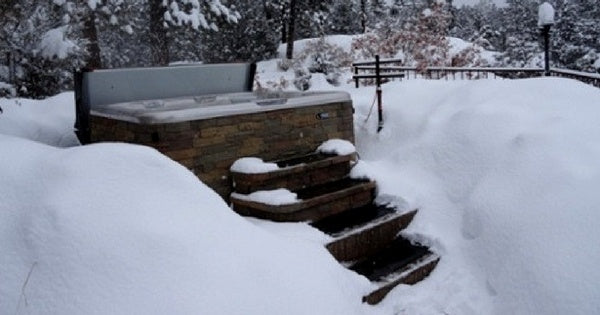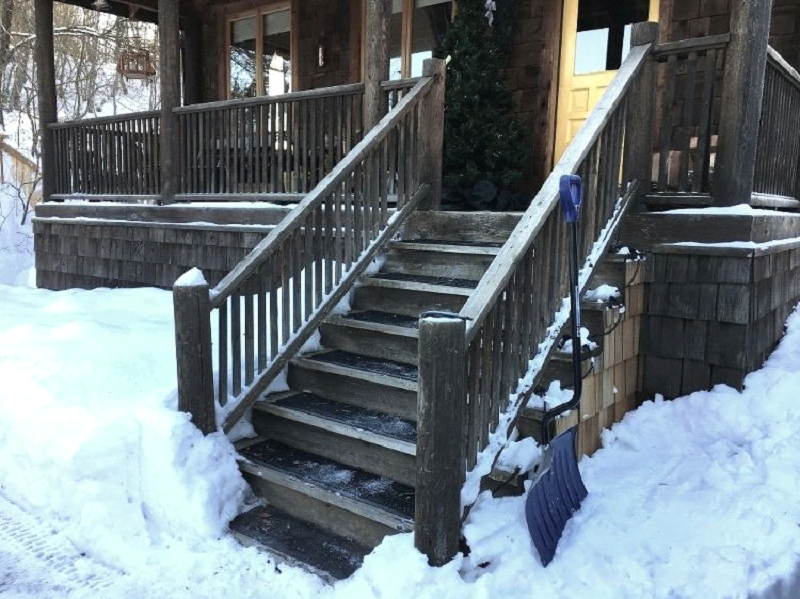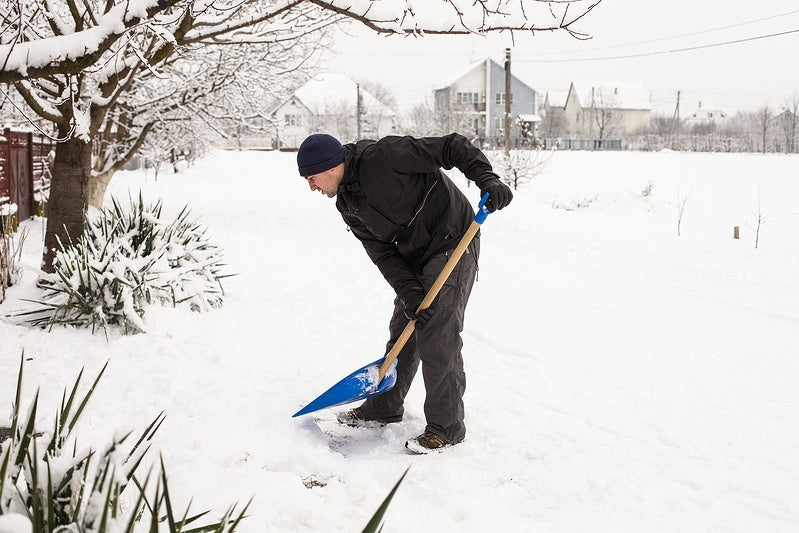
Once the winter months roll around, do you ever gaze out the window at your hot tub and think that it may be months before the two of you reunite?
Time spent in a hot tub during winter can be wonderful. There’s nothing like experiencing the heat and relaxation of the water in contrast to the crisp, cold air around you. However, if you know that you won’t be enjoying the warmth and luxury of those jets and bubbles for at least three months, it’s a wise and potentially cost-saving decision to look into draining and winterizing your hot tub. Let’s take a look at the pros and cons.
Winterizing: Is it the right decision?
Winterizing your hot tub can be a complicated process and if done incorrectly can end up costing you significantly in repair costs. In fact, most damage to hot tubs comes from improper winterization, so it’s worth examining whether this is the right option before taking on this task.
If you’re planning on being at home through the winter months, it may be a better option to keep your hot tub running and filled with heated water. If you choose to take this route, you’ll continue to test and treat the water regularly even if you won’t be enjoying your hot tub.
Most newer hot tubs are energy efficient and require minimal power to maintain, even in cold temperatures. It may be just as cost effective to leave your hot tub running versus undertaking the task of winterizing it.
However, if you know you’ll be away for the winter and won’t be able to maintain your hot tub, winterizing it is a task worth undertaking to avoid potential costly damage from frozen water. Doing so will provide you with peace of mind knowing that your favorite way to relax outdoors will remain safe and sound awaiting your return in the spring.
How to winterize your hot tub
You can always hire a professional to prepare your spa for the winter. But, you certainly can do it yourself by taking some precautions and following the steps below. Here are a few pointers to keep in mind as you head into this project:
- Try to winterize your hot tub before temperatures drop too low. Pick a clear day when it is above freezing in order to avoid water solidifying in your still-draining tub.
- Remember to be thorough - any water left in the tub or pipes will freeze and cause cracking, and can be expensive to fix.
- To decrease the risk of any bacteria lingering in your hot tub’s dormant pipes, make sure the water has been treated and is clean before draining it.
What You Will Need
- A garden hose to help drain water from your hot tub’s drainage plug or an electric sump pump
- A wet-dry vacuum to remove as much water as possible from your tub, the jets, and pipes
- Towels to dry up any water in the bottom of the tub
- Antifreeze to prevent freezing in your hot tub’s pipes
*Pro Tip: Use propylene glycol antifreeze, not the same antifreeze you’d use in your car, which contains ethylene glycol and is toxic. - A long funnel for delivering antifreeze into narrow spaces
Seven steps to winterizing your hot tub
Now that you’ve got the right tools for the task, have picked a good day to prepare your hot tub and have cleaned its water, follow these steps to winterize:
- Make sure there is no power going to your hot tub. You can do so by either unplugging it or turning off the circuit breaker that supplies the power.
- Drain the water. Remove the drain plug from your hot tub and use either a sump pump or allow gravity to take its course and let the water drain on its own. In many models, you can also attach a garden hose to the drain plug. If you decide to go this route, know that this step may take a while. Using a sump pump is a quicker and more efficient way to drain the water from your hot tub.
- Remove your hot tub filters. This is a good opportunity to clean them so they’ll be ready for use in the spring.
- Make sure you remove any remaining, hidden water in pipes and pumps that can freeze and damage your hot tub. Use a wet-dry vacuum to remove water from the jets, filter standpipe and any other opening where water may still be pooling.
If you’re unsure about the inner workings of your hot tub, consult your owner’s manual. It’s also highly recommended that you use your vacuum’s blow feature versus sucking out remaining water from jets and pipes. Finally, use towels to soak up any standing water that may have collected at the bottom of your tub or its footwells during this process.
*Pro Tip: Since this step is so crucial when it comes to avoiding costly damage to your hot tub, it’s recommended that you do it twice to ensure that all the water is removed from your entire spa unit.
- Using a funnel, pour antifreeze into the hot tub’s jets, standpipes and any other openings where water enters or leaves.
- Now that your hot tub is empty, it’s a good opportunity to clean its shell and cover using a cleaner specifically designed for this purpose.
- Replace the drain plug and the cover, making sure they’re secured to avoid any unwelcome winter guests in your hot tub and to avoid losing them in severe storm weather. Protect your hot tub’s cover by securing over it a tarp or specialized winter spa cover.
*Pro Tip: To avoid damage to your hot tub’s cover from the weight of accumulated snow and ice, place plywood boards on top of it before securing an extra cover or tarp over it.
Follow these tips and steps to ensure peace of mind that your hot tub will be winter-proof and ready for use in the spring. Remember that if you’re going to be available to maintain your hot tub during the winter months and can access it, it may be a good option to leave it heated and running.
If you do leave it running, you may want to explore options for making your hot tub’s use more appealing during the winter. These include creative ways to heat your deck and using heated snow-melting mats to ensure easy access to what could be a luxurious and soothing pleasure during the cold winter months.


